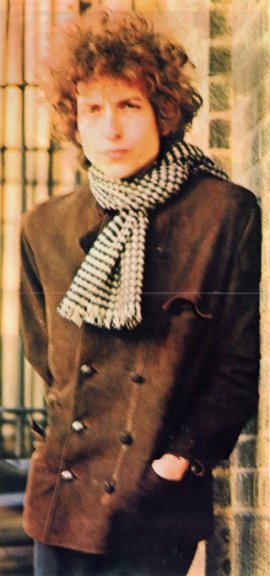 Thanks, reader, for finding Sean Wilentz' essay Mystic Nights: The Making of Blonde on Blonde in Nashville.
Thanks, reader, for finding Sean Wilentz' essay Mystic Nights: The Making of Blonde on Blonde in Nashville.
Al Kooper said of Dylan's double-album masterpiece, “nobody has ever captured the sound of three a.m. better than that album. Nobody, even Sinatra, gets it as good.” In fact, it seems as if most of the songs were both written and recorded at 3 AM.
Apparently the entire record was built around Visions of Johanna, which begins thus:
Ain't it just like the night to play tricks when you're tryin' to be so quiet?
We sit here stranded, though we're all doin' our best to deny it
And Louise holds a handful of rain, temptin' you to defy it
Lights flicker from the opposite loft
In this room the heat pipes just cough
The country music station plays soft
But there's nothing, really nothing to turn off
Just Louise and her lover so entwined
And these visions of Johanna that conquer my mind.
A quote from the piece:
Blonde on Blonde might well have included a character named Napoleon xiv, and the album sometimes seemed a little crazy, but it was no joke (not even the frivolous “Rainy Day Women”); and it was hardly the work of a madman, pretended or otherwise. At age twenty-four, Dylan, spinning on the edge, had a well-ordered mind and an intense, at times biting, rapport with reality. The songs are rich meditations on desire, frailty, promises, boredom, hurt, envy, connections, missed connections, paranoia, and transcendent beauty—in short, the lures and snares of love, stock themes of rock and pop music, but written with a powerful literary imagination and played out in a 1960s pop netherworld.
Blonde on Blonde borrows from several musical styles, including ’40s Memphis and Chicago blues, turn-of-the-century vintage New Orleans processionals, contemporary pop, and blast-furnace rock & roll.
Also, FYI, here is Paul Williams' 1966 review of Blonde on Blonde in Crawdaddy.
Image: The unfolded cover photo of Blonde on Blonde


 Thanks, reader, for finding Sean Wilentz' essay
Thanks, reader, for finding Sean Wilentz' essay